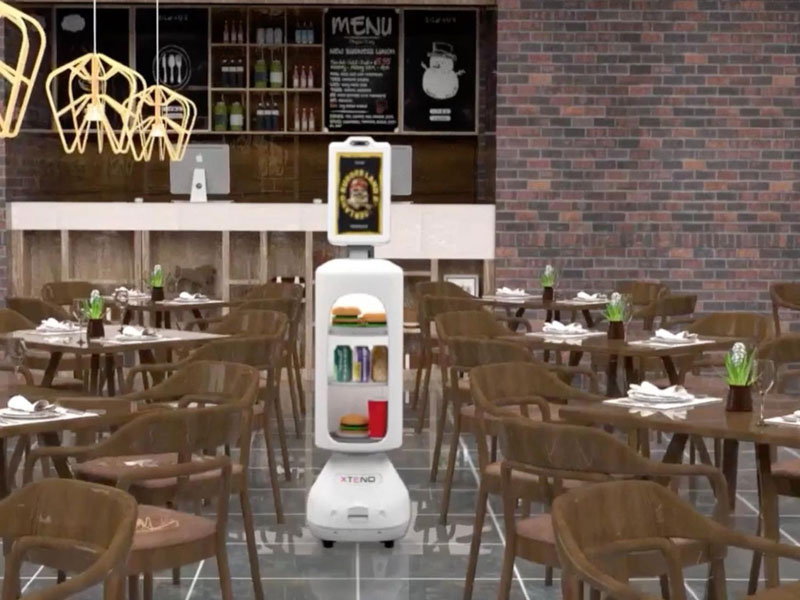Table of Contents The Challenge of Complexity in RoboticsOrchestrating Cross-Functional TeamsPost-Deployment Monitoring and MaintenanceThe Need for an Integrated Product Information EcosystemThe Limitations of Traditional Siloed PLM SystemsEvolving Business Models: Selling Solutions, Not Just DevicesReal world …
Table of Contents
Robotics is one of the most complex fields in modern engineering, requiring the integration of mechanical, electrical, electronic, and software components into a single, cohesive product. Unlike many traditional products, robots must not only function as standalone devices but also interact seamlessly within larger systems, operate autonomously, and often adapt to dynamic environments. The complexity of designing, manufacturing, and maintaining robots presents unique challenges that demand a robust approach to product lifecycle management (PLM).

The Challenge of Complexity in Robotics
Robots represent the convergence of multiple engineering disciplines, each with its own set of challenges. The mechanical components must be precise and durable, the electronics must support reliable control and communication, the embedded software must enable intelligent operations, and all these systems must work together harmoniously. This level of complexity demands a sophisticated approach to product data management that spans design, manufacturing, deployment, and service.
Unlike simpler mechanical products, robots require a highly integrated approach to development. A small change in one area—such as a new motor specification—can have cascading effects across the electrical, software, and mechanical domains. Keeping track of these interdependencies and ensuring a seamless flow of information across teams is critical to success.
Orchestrating Cross-Functional Teams
The development of a robotic system involves multiple teams, each working within their specialized domains. Mechanical engineers develop the structure and motion mechanisms, electrical engineers design circuits and power distribution, software engineers create the control logic and artificial intelligence, and systems engineers ensure that everything works together. In a traditional, siloed environment, these teams operate independently, leading to inefficiencies, errors, and integration challenges.
Without a shared and collaborative data management approach, critical information is often lost in emails, spreadsheets, and disconnected software systems. This results in costly miscommunications, duplicated work, and delayed time-to-market. A modern approach to PLM provides a unified digital environment where all teams can access the same real-time data, improving collaboration, reducing errors, and accelerating innovation.
Post-Deployment Monitoring and Maintenance
Unlike mass-produced consumer goods, robots often require ongoing monitoring and maintenance after they have been shipped to customers. Many robotic systems are deployed in mission-critical environments—such as manufacturing lines, warehouses, healthcare settings, and autonomous vehicles—where uptime is essential. Companies must track performance data, diagnose issues remotely, and schedule predictive maintenance to ensure reliability and longevity.
Traditional PLM systems usually cover engineering work only, usually disconnect from procurement and maintenance and often fail to connect real-world performance data back to engineering teams, limiting the ability to optimize products over time. By integrating real-time monitoring with digital product data, robotics companies can proactively manage their deployed systems, reduce downtime, and improve future product iterations based on actual usage data.
The Need for an Integrated Product Information Ecosystem
Given the complexity of robotic systems, manufacturers must establish a robust set of tools to manage product information and lifecycle processes from early design stages through procurement and maintenance. This requires an ecosystem that enables:
- Seamless collaboration between mechanical, electrical, and software engineering teams.
- Real-time visibility into product changes and their impact across different domains.
- Efficient management of procurement and supply chain data to avoid delays and cost overruns.
- Integration of field data to inform design improvements and predictive maintenance strategies.
- Compliance tracking for industry regulations and safety standards.
Relying on disconnected or outdated PLM tools can lead to inefficiencies and missed opportunities for optimization. A modern, digital-thread approach ensures that all aspects of a robot’s lifecycle are connected and easily accessible to relevant stakeholders.
The Limitations of Traditional Siloed PLM Systems
Legacy PLM systems were designed for traditional waterfall product development processes, where requirements are defined upfront, followed by sequential design, manufacturing, and support phases. Most of traditional PLM systems are typically covering engineering work only, disconnected from other teams, siloed and not providing a good way to monitor systems in maintenance and operation.
While this approach may work for simpler mechanical products and siloed environment, it is ill-suited for the iterative and interconnected nature of robotics development.
Traditional PLM solutions struggle with:
- Lack of flexibility: Waterfall-based systems do not support agile, iterative product development methodologies.
- Poor cross-discipline integration: Most legacy systems are tailored for mechanical engineering but lack robust capabilities for managing electronics, embedded software, and cloud-based AI components.
- Limited collaboration: Siloed tools prevent real-time communication and coordination among teams, leading to inefficiencies and errors.
- Weak data connectivity: Traditional systems often fail to link engineering data with manufacturing and maintenance records, reducing opportunities for continuous improvement.
To keep pace with modern robotic development, manufacturers need PLM solutions that are dynamic, cloud-enabled, and capable of integrating complex, multi-domain data across the entire product lifecycle.
Evolving Business Models: Selling Solutions, Not Just Devices
The robotics industry is undergoing a shift from selling standalone products to offering integrated solutions that include hardware, software, and services. Instead of simply manufacturing robots, companies are increasingly providing robotic-as-a-service (RaaS) models, where customers pay for usage rather than ownership. This shift creates new revenue streams and aligns incentives toward maximizing robot performance and uptime.
To support these new business models, robotics companies must adopt lifecycle management strategies that extend beyond product design and manufacturing. Managing service contracts, predictive maintenance, software updates, and real-time analytics requires a more connected and intelligent data management infrastructure. Companies that leverage modern digital platforms to manage their product lifecycle will gain a competitive advantage by offering higher-value solutions to customers.
Real world examples – Xtend AI Robotics
Here is the story of Xtend AI, a company developing mobile intelligence and robotic platforms. The idea of Xtend AI is to build a series of robots that can be configured by customers to perform tasks and operate autonomously in different environments.

With a mission to revolutionize robotics, Xtend AI turned to OpenBOM to streamline their development process, enabling them to design and manage complex robotic systems efficiently. Xtend AI leveraged OpenBOM’s flexible and dynamic Bill of Materials (BOM) capabilities to manage their product data. By consolidating supplier information, tracking quantities, and generating purchase orders directly from the BOM, Xtend AI ensured a smooth transition from design to production, avoiding delays and oversights.
Here is a full story and interview with Xtend AI’ s David Rubli – Head of Mechatronics R&D.
Conclusion: Data Management as the Next Frontier for Robotics Manufacturing
As robotics companies scale and compete in an increasingly complex and dynamic market, effective data management becomes a strategic imperative. The ability to seamlessly integrate product development, manufacturing, and post-deployment services will define the winners in this industry.
Manufacturers that embrace modern SaaS-based PLM solutions will be better positioned to:
- Improve product quality by reducing design and manufacturing errors.
- Optimize costs by streamlining procurement and supply chain management.
- Increase ROI by enabling new service-based business models and predictive maintenance capabilities.
The future of robotics manufacturing lies in holistic, cloud-enabled product lifecycle management. By leveraging modern digital tools, robotics companies can break free from outdated, siloed processes and build more innovative, resilient, and profitable businesses.




